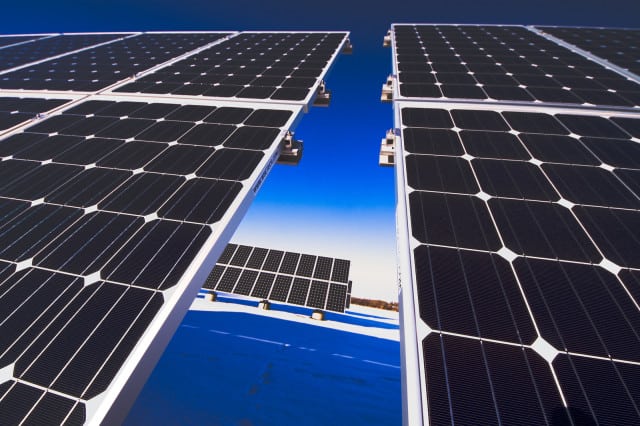
The new solar panels installed on campus provide 70 per cent of the horticulture science field facility’s annual energy needs.
A 24-kilowatt photovoltaic system in the horticulture fields south of campus has been producing environmentally-friendly power for the university since September.
The three massive solar panels, which were installed over summer, will provide 70 per cent of the horticulture science field facility’s annual energy needs. The same energy would power 3.7 city homes a year on average.
Any energy that the facility can not use at the time will be fed back to the city’s power grid.
Michael Molaro, associate director of sustainability and infrastructure for the U of S Facilities Management Division, said that the field along 14th Street was a prime spot for the south-facing panels due to the open field and the large amount of sunlight hours the area receives.
An additional factor for choosing the horticulture facility was its electrical consumption, Molaro said.
“Looking at their historical electrical consumption it seemed like a good fit,” Molaro said. “We didn’t want to do a very large building but do something that was substantial enough to see the payback.”
Any additional power that is captured by the photovoltaic system will be fed back into the grid to be used by Saskatoon Light and Power, which in turn will turn back the electrical meter on the site.
“In the summertime we’re producing more than we need but it’s being fed back literally into the grid,” Molaro said. “There is no real transaction, it spins the meter backwards.”
The university received a $35,000 tax rebate from the provincial government and expects after 14 years that the system will pay for itself in saved energy.
Molaro said that the likelihood that the university will invest further into using solar energy in the near future is slim.
“Photovoltaics have come down in price significantly but they’re probably going to have to come down more and our electrical rates will have to come up significantly before we see it in any sort of volume on campus,” he said.
This project’s shift to solar power will help the university reduce not only its own greenhouse gas emissions, but those of Saskatoon Light and Power as well. The company’s power currently comes primarily from SaskPower’s nearby natural gas-fired stations.
Kathryn Theede, an energy and emissions officer for FMD, said that using the solar panels will save 20 tonnes of GHG emissions per year.
“[It] is significant. When you look at the campus scale it’s small amount, but it will take a lot of small amounts to bring that number down,” Theede said.
The university’s Climate Action Plan will be put into place in 2013 and aims to reduce the university’s GHG emissions so that they are 20 per cent lower than they were in 2006-07 by 2020.
Nearly 60 per cent of the university’s GHG emissions come from its electricity usage.
Correction 06/12/2012: A previous version of this article stated that the solar panels on campus were north-facing, when in fact they are south-facing. Also, the university’s Climate Action Plan will be put into place in 2013.
—
Photo: Mark Ferguson/On Campus News